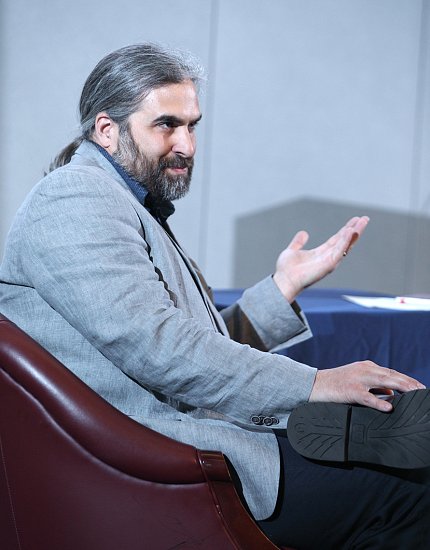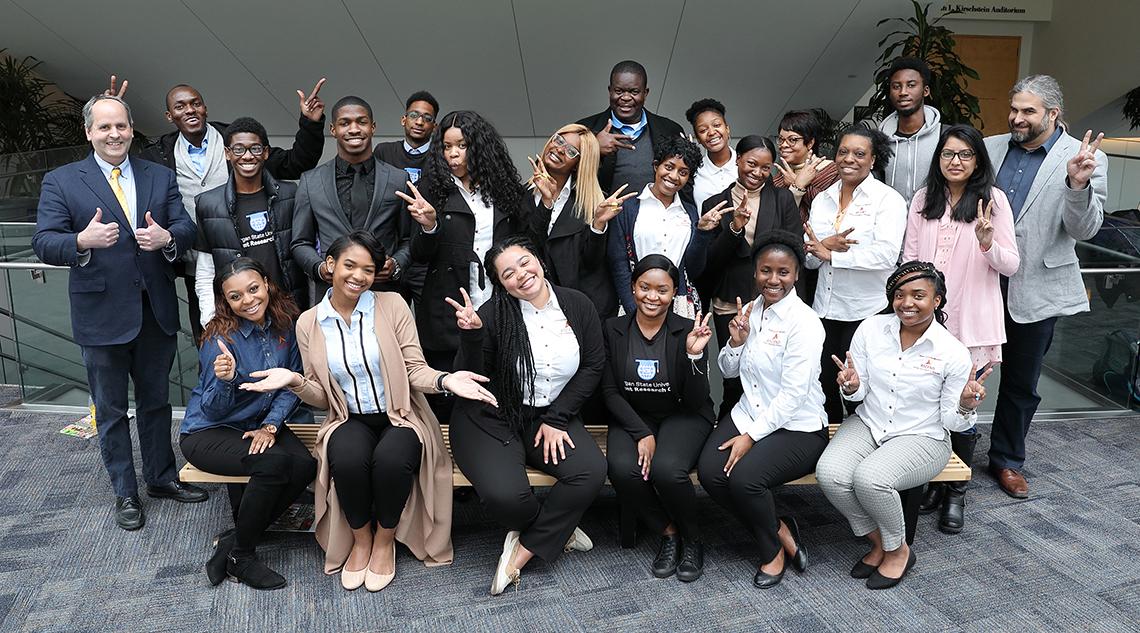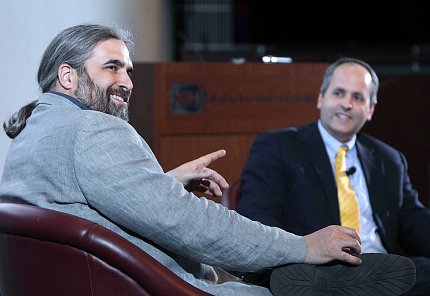Ancient Bloodsuckers
Biologist Gathers Genetic Clues from Sea Lampreys

Photo: Chia-Chi Charlie Chang
Fishermen in the Great Lakes probably wish there were more researchers like Dr. Jeramiah Smith, who studies sea lampreys. These slimy, parasitic little suckers feed on adult fish, wreaking havoc on the lake trout population and often evading control efforts. In some parts of the world, they’re a delicacy; elsewhere, a predatory pest. Lampreys also happen to be fascinating fish that offer insights into evolutionary biology, tissue regeneration and maybe even cancer.
Smith, associate professor in biology, University of Kentucky, has loved going fishing since his childhood days. Growing up in eastern Wyoming and the Black Hills of South Dakota, he spent much of his time outdoors in an area with a rich geological past. Fascinated by the abundance of fossils native to the area, he often dreamt of becoming a paleontologist. These interests in the deep history of life ultimately led Smith to study lampreys, considered living fossils that diverged from the vertebrate lineage 600 million years ago.
“They’re important in terms of understanding the evolution of basically everything that makes us vertebrates,” said Smith at the NIGMS Director’s Early-Career Investigative Lecture recently in Natcher Conference Center. The lecture, part of a series designed to inspire undergrads to pursue careers in biomedical research, was followed by a Q&A chat with NIGMS director Dr. Jon Lorsch.
“Because lampreys share the deep ancestry of the rest of other vertebrates,” Smith said, “we can reconstruct changes that have, over time, given rise to our own development.”
The species has changed little in its outward appearance over the last 340 million years, yet lampreys have unusual traits that continue to intrigue scientists. For example, the lamprey’s mouth opens to form a large, sucking disk with razor-sharp teeth. It has no jawbone and its skeleton is mostly cartilage. But it does have a spinal cord that, if severed, can regenerate itself within several months.
“Lampreys have genes that are homologous to genes we have in our own genome,” said Smith. Some of the lamprey’s cellular processes, however, such as those that contribute to spinal cord regeneration, may have been lost at some point during the evolution of most vertebrates.

Photo: Chia-Chi Charlie Chang
The lamprey also is one of few vertebrate genomes that toss out unwanted genes. By undergoing programmed genome rearrangement (PGR), the lamprey discards 20 percent of its DNA while still an embryo.
This begs the question, quipped Smith, “How does the lamprey manage to re-engineer its genome when it’s not a scientist?”
He showed a slide of two balls of cells in a petri dish that thrived and developed into his now 6-year-old twin sons.
“Each one of these cells has the same genome,” said Smith. “Each of the cells [in one of the embryos] has exactly the same material as every cell in Jack’s body. The amazing thing is: the cells that make [Jack’s] hair and his skin and his liver, and the cells that will make my grandchildren, all look very different from one another despite the fact that they share the same genome.” That’s because these identical cells can turn genes on or off.
Most vertebrates turn off or silence genes chemically but, Smith said, lampreys shut cells off by disposing of them. What’s more, the lamprey has two distinct genomes.

Photo: Chia-Chi Charlie Chang
When Smith’s lab first sequenced the lamprey genome, they found that many genes, normally present in germline cells (eggs and sperm), were absent from its blood. They continued finding genetic sequences that only existed in the lamprey’s reproductive cells but not in any other tissue. There was a second, smaller genome found in all other cells of its body. Studies have used the genome to identify genes that enable lampreys to regrow severed spinal cords. Humans also have these genes, but use them differently.
“What we think we’re learning from lampreys is that they delete these genes to regulate their function,” said Smith. “These genes are kept in the germline genome over evolutionary time—so they must be important for reproduction at some level—but they’re not allowed to be in most of the cell types, so perhaps they’re dangerous and that’s the way the lamprey regulates these genes.”
It’s known that turning on certain silenced genes can contribute to development of cancer. Studies are ongoing to determine whether the lamprey disposes of certain genes to protect itself from this disease.
In one experiment, DNA should have been migrating with the rest of the genome during normal cell division, but instead lagged behind and formed structures that are not typically seen in healthy cells. Thanks to 3-D imaging, Smith’s lab could see that during PGR, as the lamprey shed genes over several cell divisions, in the 7th division there was abnormal material, characteristic of aggressive cancer cell types.
“Over evolutionary time, lampreys have done more experiments than us and maybe know a little more about the genes that contribute to the development of cancer,” said Smith.

Photo: Chia-Chi Charlie Chang
Sequencing lamprey genomes is tough in part because there’s repetition in many places, said Smith. Using Cas-9 gene editing, his lab can knock out specific genes to learn more about their role in lamprey’s DNA elimination process and other notable characteristics.
“If an experiment doesn’t go as expected, don’t get discouraged,” Smith told a college student asking for career advice. “See what else it’s telling you. In many ways, we move forward from seeing the unexpected.”
The student was among 20 undergraduates from Morgan State University in Baltimore who attended as part of the NIGMS-sponsored ASCEND Center for Biomedical Research. The program promotes diversity and entrepreneurship among young scholars.
Smith concluded, “I hope I’ve given you some sense of the importance of funding basic research that’s not necessarily disease focused, but which helps us understand general principles that underlie disease.”
To see the complete lecture, visit https://videocast.nih.gov/summary.asp?live=27347&bhcp=1.
